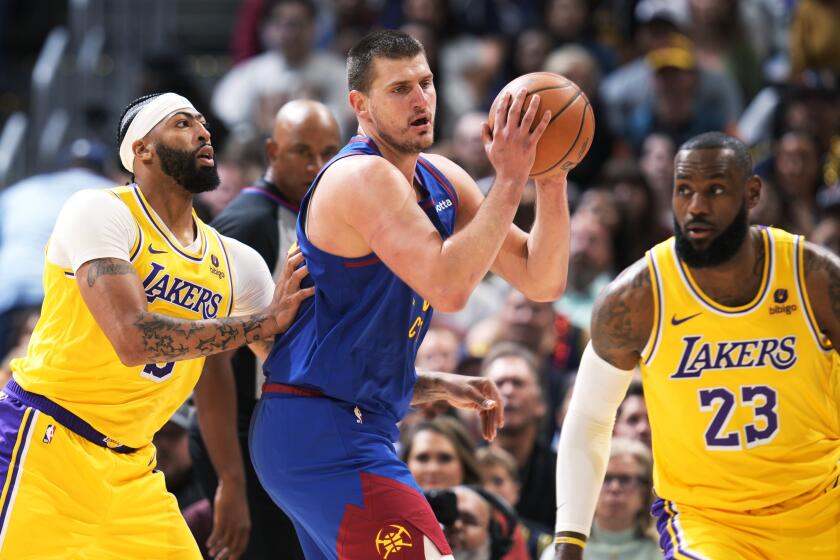Left-right combination
If ever there was a no-brainer for a manager, this appeared to be it.
Faced with a deciding seventh game of the World Series, he had his 23-game winner, a former Cy Young Award recipient, primed and ready with three days’ rest.
But the manager, Walter Alston, figured he had a better option. And so too did the 23-game winner himself, Don Drysdale
On the eve of the last game of the 1965 World Series, Drysdale and catcher John Roseboro pulled Alston aside to tell him, “You’ve got to pitch the left-hander.”
That would be Sandy Koufax.
“Drysdale was willing to give up Game 7 for the benefit of the team,” recalled Jeff Torborg, the team’s backup catcher at the time, from his Florida home. “Don said he would go to the bullpen and be available. That showed me what a team leader he was. These guys normally never asked out of the rotation. You couldn’t peel them off the mound.”
Drysdale wasn’t needed that day. Koufax, on two days’ rest with an aching left elbow that ultimately would end his career a year hence at age 30, would pitch a three-hit shutout in a 2-0 victory over the Minnesota Twins, striking out 10.
Koufax and Drysdale, two future Hall of Fame members, were a pair of aces who gave Alston a lot of winning hands.
“We were very fortunate to have two giants of the game on the same team,” Torborg said. “They had different styles and different personalities, but they were both unbelievable.”
Koufax was a comet, streaking across the major league landscape, a burst of brilliance too quickly extinguished.
Don’t look for his name in a significant spot on the list of career pitching leaders. Plagued by wildness early in his career and by arthritis at the end, Koufax wasn’t around long. But over a five-season span beginning in 1962, he may have been the best to plant cleats on a major league mound.
Koufax led the league in earned-run average in each of those seasons. Over the last four, he had records of 25-5, 19-5, 26-8 and 27-9, struck out more than 300 batters in three of the last four seasons with a high of 382, had an ERA under 2.00 in three of those seasons, won three Cy Youngs and a most valuable player award, and led the Dodgers to two World Series championships. Koufax also pitched no-hitters in four consecutive years, including a perfect game in 1965.
He had a rising fastball that often left hitters flailing like 5-year-olds in a tee-ball game, and a curve that dropped as if it were falling off a shelf.
Toward the end, however, the strain on Koufax’s arm was so bad, “it would swell to three or four times its normal size after a game, leaving Sandy unable to even bend it,” Torborg said.
Despite that, Koufax refused to come out of games early, even if the Dodgers were comfortably ahead. In those final four seasons, he had 89 complete games, including 27 in each of his last two years, numbers hard to fathom in this era of pitch counts when a quality start means six innings.
Koufax retired with a 165-87 record and a 2.76 ERA.
While the left-hander spun his magic by overwhelming hitters, Drysdale, a right-hander, mixed in the element of intimidation. He stood 6 feet 6 with a menacing glare for any hitter who dared to invade his space, which, in Drysdale’s mind, was the inside part of the plate.
Or more.
“Sooner or later, you have to say it’s my ball and half the plate is mine. Only I never let on which half of the plate I wanted,” Drysdale said in his autobiography, “Once a Bum, Always a Dodger.”
He enforced his territorial claim with a sidearm delivery that caused his pitches to scorch any hitter who dared to crowd the plate.
In 12 seasons, Koufax hit 18 batters. In 14 seasons, Drysdale hit 154.
“Once, the manager came out to the mound and instructed me to walk a batter,” Drysdale said. “I wound up hitting him instead. Why waste four pitches when one will do?”
Drysdale pitched a then-record 58 2/3 scoreless innings in 1968. He twice won more than 20 games, going 25-9 in 1962, his Cy Young season. He wound up 209-166 with a 2.95 ERA.
While having a rotation with two such formidable arms might seem like an embarrassment of riches, it was hardly a luxury for the Dodgers of the early 1960s, who were saddled with an often-anemic offense. Runs always seemed to be in short supply for Koufax and Drysdale. A Dodgers rally might consist of a bunt single by shortstop Maury Wills, two stolen bases and a sacrifice fly.
Drysdale was absent the night of one of Koufax’s no-hitters. Told about it, Drysdale’s response was, “Did we win?”
Figuring it was only fair they be compensated for their heavy workload and value to the team, Koufax and Drysdale staged a holdout before the 1966 season, seeking six-figure salaries. That might seem laughable in today’s baseball economics, but, in those days, the six-figure deals went to the home run hitters.
The Dodgers duo got their money, Koufax getting $125,000, Drysdale $115,000.
They retired before the free-agent era, but when Dodgers owner Walter O’Malley was once asked what he would have had to pay Koufax on the free-agent market, O’Malley replied, “Sandy and I would have been partners.”
Drysdale also left the game prematurely because of injury, retiring in 1969 at 33 because of a shoulder injury. He went on to become a broadcaster, and died of a heart attack in a Montreal hotel room in 1993 while on a Dodgers trip. He was 56.
Koufax now lives in Vero Beach, Fla., and can be found at Dodgertown during spring training, tutoring young pitchers, trying to pass on the standards he and Drysdale set.
That doesn’t figure to happen. With starting pitchers having become little more than extensions of the bullpen today, the numbers Koufax and Drysdale put up may last another half a century or more.
More to Read
Get our high school sports newsletter
Prep Rally is devoted to the SoCal high school sports experience, bringing you scores, stories and a behind-the-scenes look at what makes prep sports so popular.
You may occasionally receive promotional content from the Los Angeles Times.






